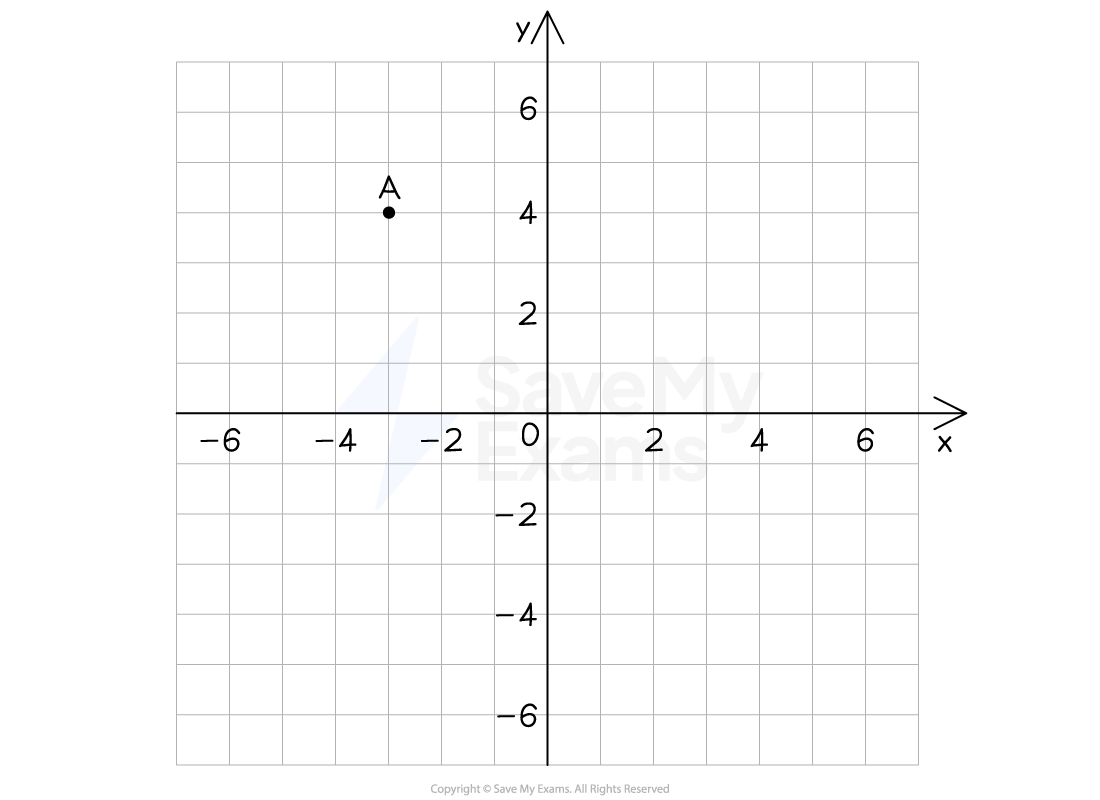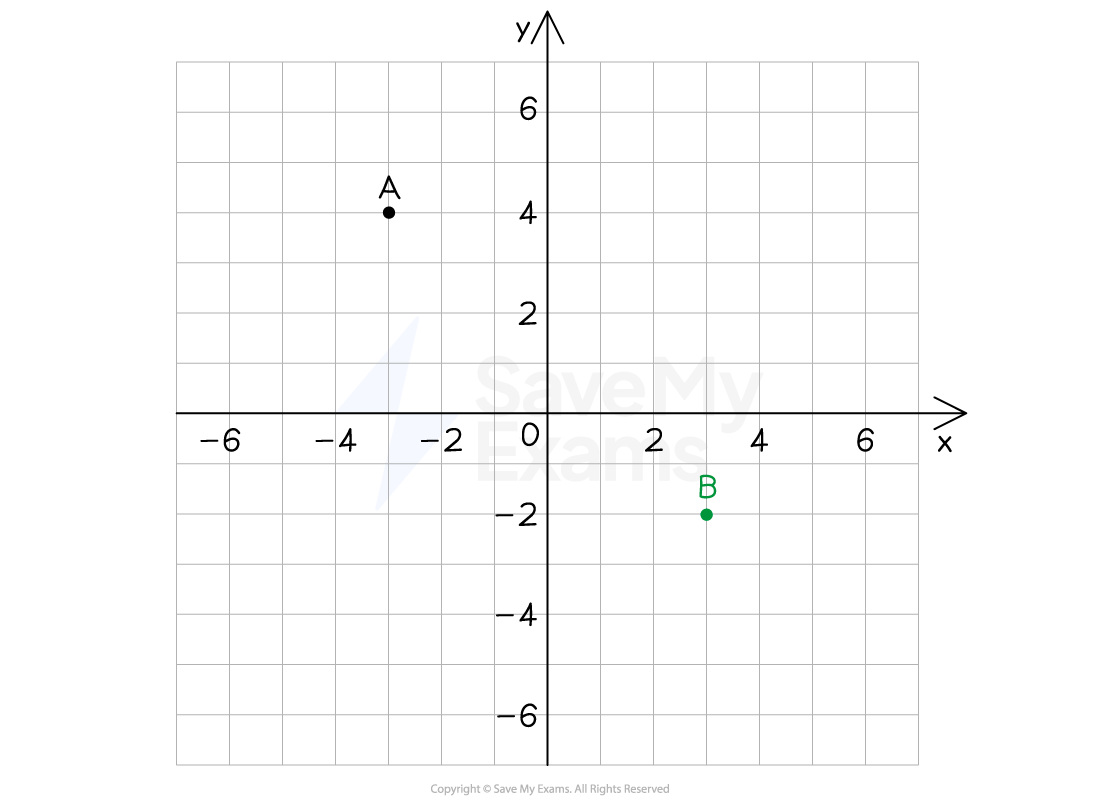Coordinates (Cambridge (CIE) IGCSE Maths): Revision Note
Exam code: 0580 & 0980
Did this video help you?
2D coordinates
What is the Cartesian plane?
The Cartesian plane is a two-dimensional grid that has
a horizontal scale, called the x-axis
a vertical scale, called the y-axis
The two axes meet at the origin
where x and y are both 0
What are coordinates?
Coordinates are a pair of numbers, x and y , that describe the location of a point on the grid
They are written in brackets as (x , y )
The point is
x units on the horizontal scale
y units on the vertical scale
The origin is (0, 0)
Positive values of x are to the right of the origin
Negative values are to the left
Positive values of y are above the origin
Negative values are below
For example, from the origin:
(2, 5) is the point 2 units to the right and 5 units up
(-1, -4) is the point 1 unit to the left and 4 units down
"Along the corridor, up the stairs" helps to remember horizontal then vertical, (x , y)
Examiner Tips and Tricks
Check the scale on the coordinate grid! 1 square might not represent 1 unit.
Worked Example
(a) Write down the coordinates of the point A shown on the axes below.

Answer:
A is 3 units to left, so x is −3
A is 4 units up, so y is 4
Give your answer in brackets
(−3, 4)
(b) Mark the point B with coordinates (3,- 2) on the same set of axes.
Answer:
Start at the origin
Count 3 units right and two units down
Mark the point with a solid circle or cross and label it B


Unlock more, it's free!
Did this page help you?